In 2022, I connected for work purposes with a budding AI scientist over LinkedIn. Unfortunately, she is never quite active on the platform. But I did have her email address, so I shot off an introductory message on Gmail. She sent me a courteous reply, and closed with the following line:
I prefer Telegram, but WhatsApp works too. Having a conversation over email is sooooo 2010-esque. 🙂
The moral of the story? Email is underrated. Of course, that’s generally speaking. But why? Notwithstanding the building celebrity of AI email marketing, why is email viewed in such a light?
Chad S. White, Head of Research at Oracle Marketing Consulting, and the celebrated author of five books on email marketing, holds the tech giants responsible for the general underestimation of email:
“…lots of very wealthy companies like to position their service or tool as email-killers—most famously, Facebook and Slack, but plenty of others, too. They say email is old, outdated, and hasn’t evolved to meet the needs of today’s consumers, especially the youngest ones. And there’s really no one to defend email, because it’s an open platform…”
White contends that the very wealthy companies are wrong. Indeed, email is the single most productive marketing channel in terms of revenue generation alone. Today, with AI thrown in the mix, email is, and should be, any informed marketer’s first pick.
In this guide, we take an exhaustive look at AI email marketing, eyeing as we do its many facets relative to copy, design, workflows, and analytics. Let’s roll!
- Understanding AI In Email Marketing
- How To Use AI In Email Marketing?
- AI For Copy: Email Body, Subject Line
- AI For Design: Templates And Coding
- AI For List Segmentation
- AI For Deliverability Testing
- AI For Hyper Personalization
- AI For Send Time Optimization
- AI For Email Analytics
- The Future Of Email Marketing With AI
- Wrapping Up!
Understanding AI In Email Marketing
Artificial intelligence simulates natural/human intelligence. One of the fundamental characteristics of human intelligence is pattern recognition. Our minds are designed to convert random inputs to ordered, coherent outputs. That’s how we make sense of the world around us, by formulating plausible narratives.
That’s exactly what AI, generally considered, does as well.
An AI system assimilates trained data, analyzes the data to identify patterns, and uses those patterns to make decisions. That’s what ‘intelligence’ is primarily about – converting sound to music, so to speak, by identifying patterns within an entropic swirl of information.
How does that work out in the context of email marketing?
Let’s take one aspect of email marketing: email list segmentation. As we know, segmentation is the process of breaking up a list of subscribers according to their behavior, interests, and motivations.
Manual segmentation is time-consuming as it may take months to comb through large, complex data sets, squinting for meaningful, actionable patterns. It is also highly error-prone. Equally, as your email list grows, you would need to design a separate model every time to handle the increase.
To manage all this, you may need to hire a skilled data scientist, thereby incurring additional costs (freelance data scientists may charge up to $2000 per project), without necessarily being anywhere close to increased productivity and accuracy.
Enter AI-based email marketing, which streamlines the segmentation process thus:
- Pattern recognition: Pattern recognition consists in clustering data points according to information derived from past representations. AI uses machine learning (ML) to identify patterns in customer data, and creates highly targeted, hyper personalized segments.
- Data management: Data is always changing. The emails you want to send out should be tailored to variations, such as change in subscriber email address, engagement patterns, shopping habits, etc. ML models handle and incorporate evolving data, continually validating and updating it to minimize errors, and to flush out obsolete customer intel.
- Automation: With the help of email marketing automation services, you can easily create email workflows, and set up automated triggers to reach out to the right segment with the right message at the right time. Marketers no longer need to hire expensive data analysts to help them deal with data.
That’s one small instance of how AI in email marketing helps marketers make efficient, accurate data-driven decisions. Let’s take a detailed look at a few more.
How To Use AI In Email Marketing?
AI For Copy: Email Body, Subject Line
Generative AI tools such as Copy.ai, ChatGPT, Writesonic, etc. are some of the most popular copywriting tools at the moment. With varying degrees of sophistication, all these tools generate text according to user prompts.
This is known as prompt engineering, or AI whispering. The more specific the prompt, the more granular the response.
Here’s an example of a welcome email on Copy.ai.
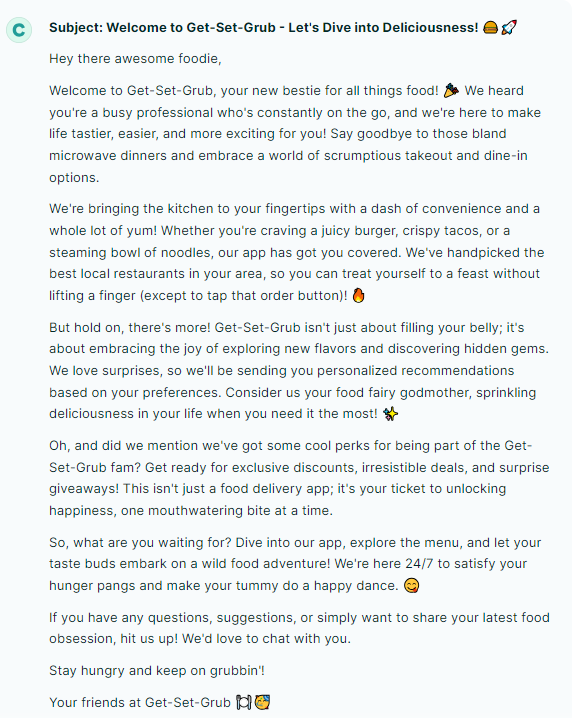
Needless to say, this is a brilliant output. However, there are limitations. For one thing, the copy is too long and dense. It’s also repetitive in parts. It lacks differentiation since it is not trained on new data, Get-Set-Grub being outside the database.
The point of using the tool is that it gives a strong head start to the writing process. The right framework has been generated, and the copy can be tweaked to satisfaction. As far as differentiation is concerned, it’s usually more of a manual endeavor that is dependent on a keen, instinctive understanding of your brand.
But you can, if you want to, add your brand voice on Copy.ai. The tool articulates the brand voice on the basis of a 50-500-word article, blog post, or mission statement of a brand. You can save the brand voice, and ask Copy.ai in any future prompt to generate a brand voice-optimized text.
We fed the tool a 50-word mission statement of an email design service, and here’s how Copy.ai analyzed the brand voice. Next, you save the analysis, and integrate it into your future prompts.
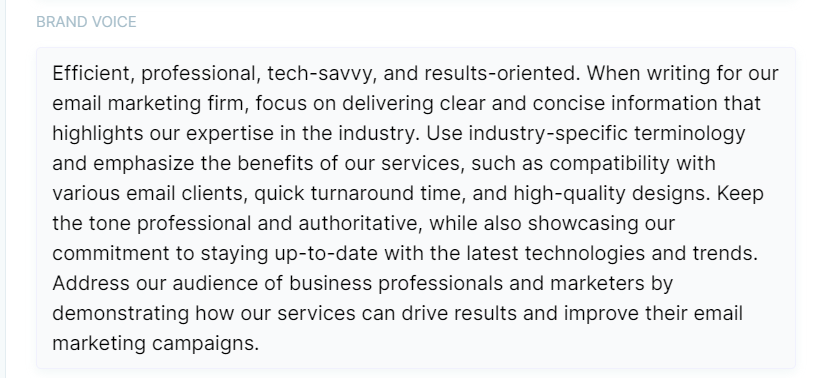
Let’s consider another copywriting tool, Writesonic. We provided the same input, and here’s what the tool came up with.
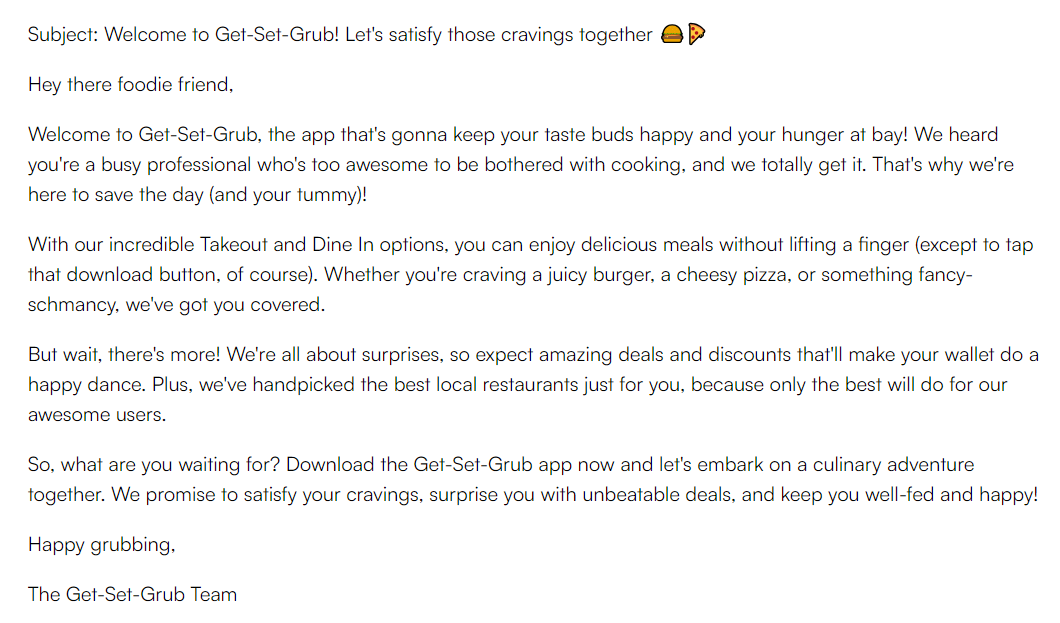
The similarities are obvious. But, compared to Copy.ai’s response, this is shorter and simpler. The paragraphs are no longer than three lines, so there’s ample white space to provide visual relief to the user. Note also the sparse use of emoticons. Of course, the copy must be edited and made more human, personalized, and distinctive.
Like the email body, you can also generate instant AI email subject lines. Consider the following list of Labor Day subject lines generated by ChatGPT 3.5 according to this instruction: “Compose 10 subject lines for a Labor Day email. Style: informal, funny. Keep your subject lines short, and to the point.”
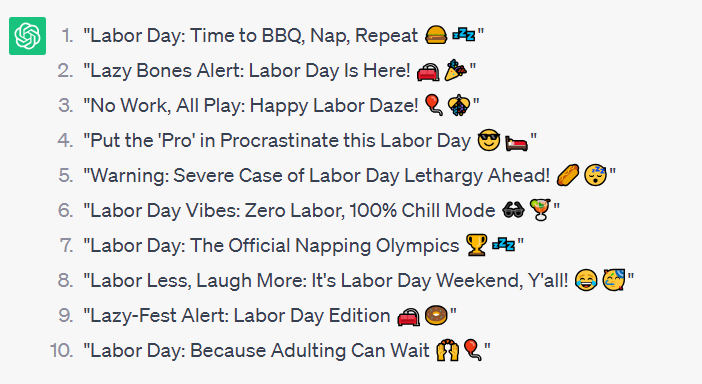
Points To Remember:
- Be highly specific: Make sure your prompts are specific, elaborate, and contextually-relevant. The more specific your prompt, the better the response. (Refer again to the prompt that generated these AI email subject lines.)
- Converse, don’t command: Maintain a conversational tone, instead of feeding concise commands. Also, avoid using jargon, slang, and convoluted sentences.
- Don’t give up: Even after feeding highly specific instructions, the AI tool may not generate a satisfactory response. In that case, continue chatting with the tool, and try to coax more information out of it. You will notice that as the context develops, the responses become more granular, and relevant.
- Always fact-check: Remember that AI does not always generate factual responses. ChatGPT 3.5, for instance, does not have an updated database. In general too, don’t rely on AI for stats, figures, and graphs.
- Always edit: Don’t rest on AI-generated responses. Keep tweaking each response, and make it as distinctive and human as possible.
AI For Design: Templates And Coding
AI-powered email marketing platforms like Sarbacane, MidJourney, Colormind, Postcards, etc. can generate beautiful email templates in no time.
You don’t need coding skills to design your templates. The tools come equipped with a variety of pre-designed, customizable, and device-optimized templates for all kinds of emails. Take a look at the following Grandparent’ Day email template generated by Sarbacane.

This email template is almost perfect. One of the cooler things about Sarbacane is that it generates templates on the basis of your website design. All you need to do is enter your website URL, and the tool will come up with brand-consistent templates.
The tool is particularly useful for those who don’t have a team of designers at their disposal. It can also help expert designers to quickly get past the sluggish, preparatory phase, and jump straight into action.
Let’s consider another AI-powered email marketing platform, Mailchimp. The following template from Alps & Meters was built using Mailchimp’s drag-and-drop email editor.
“The drag-and-drop feature allows us to quickly and easily rearrange different elements in the email,” says Nick Sapia, Chief Digital Officer at Alps & Meters. “We do a lot of experimentation to find what format works best, and once we find that, we save those as a template and we then can easily edit it from there.”
Designing custom email templates has never been easier. But as usual, AI works best under the guidance of trained users. In the case of design as well, domain experts will be more successful handling these tools.
Points To Remember:
- Plan your rows: Depending on how much information you want to include in your email, plan how many rows you’d need in the template. The header and the footer will have one row each. The body may have many sections, which in turn may have many sub rows.
- Plan your columns: Determine how many columns you need for every row. Again, this depends on the complexity of your email. Take one more look at Alps & Meters’ template: the text and image section toward the end is divided into two columns.
- Crop images: Make sure your logo and icons are cropped as closely to the border of the template as possible. Don’t keep any white space around your logo; you want it placed precisely where you need it placed. Any extra padding will create placement problems.
- Adjust padding: Finally, adjust the spacing between the content blocks, rows, and columns. Remember also to device-optimize the padding. Mobile padding will be different from desktop padding.
AI For List Segmentation
Before the advent of AI, you could segment your contacts on the basis of demographics, time zone, contact details, and shared interests. However, in order to truly engage with your subscribers, you need more granular segmentation, so your emails can be tailored to dynamic personas, instead of static, lapsed ones.
With the help of AI email marketing tools, you can have access to complex behavioral data, and create highly granular segments.
Tools like Emarsys do predictive segmentation, so you can build campaigns on the basis of what your customer is likely to do next in their journey along the sales funnel.
Emarsys offers a number of AI segment templates, such as predictive email engagement, predictive web engagement, predictive life cycle segments for customers and for leads, and predictive revenue.
You can create relational segments, AI segments, web behavior segments, mobile engagement segments, and loyalty segments. Here is an illustration of AI segmentation in action.
As you can see, the segment is named “Likely to engage – Email”. The template used is that of email engagement.
Now you know which of your leads are most likely to engage, so you can tailor your emails to those leads, and maximize the chances of engagement, and eventually, conversion.
Points To Remember:
- Set a clear objective: Do you want to improve targeting precision? Increase conversions? Boost engagement? Enhance customer satisfaction?
- Collect quality customer intel: AI-driven segmentation thrives on quality data. Collect demographic, behavioral, and psychographic data in order to create highly personalized segments.
- Test your strategy: AI segmentation is not a one-time process. Data is on the move constantly. Test your segmentation strategy with different variables and segment objectives.
AI For Deliverability Testing
Did you know that 11.1% of all emails never reach the inbox due to deliverability issues? Again, in 2020, 47.3% of emails sent during September were reported as spam.
Deliverability continues to be a thorn in the side of email marketing. Fortunately, with the help of AI email marketing tools, the thorn can be successfully plucked.
Take, for example, a tool like Unspam. Unspam notifies you if and when your IP address or domain name has been blacklisted, enabling prompt troubleshooting. It provides accessibility checks, so you know whether or not everyone can read your email.
The tool also allows you to check for broken links in your email, so as to minimize spamming. The reverse DNS feature verifies your IP address in order to prevent it from getting blocked by ESPs. You can also verify your domain’s DMARC record.
Here’s a sneak peek into how it looks in action.
This is as granular as it can get. Depending on the status of each variable, you can troubleshoot any underlying bugs in your email, and ensure foolproof delivery.
Points To Remember:
- Maintain list health: Before sending out your emails, make sure the email addresses on your contact list are active. AI-based tools like Neverbounce and Million Verifier can help you with that.
- Avoid spammy subject lines: Spam filters are highly sensitive to email subject lines. Consider dropping spammy words and phrases like ‘Free’, ‘Buy Now’, etc. Don’t overuse emoticons. Don’t write a subject line in All Caps. In the above example, you can see how Unspam has flagged the subject line.
- Include an ‘Unsubscribe’ option: Failing to include opt-out and unsubscribe links is punishable by law. The CAN-SPAM act requires companies to include “a clear and conspicuous explanation of how the recipient can opt out of getting email from you in the future.”
AI For Hyper Personalization
Personalization is old; hyper personalization is the new mantra.
Hyper personalization allows marketers to integrate physical and digital channels through which a customer may interact with a brand. Their online behavioral data can be used to make personalized recommendations when they visit the store, and vice-versa.
This will gradually translate into greater engagement, loyalty, and voluntary brand advocacy.
With the help of AI, marketers can now use real-time customer data and advanced analytics to deliver highly targeted emails to customers.
AI-based email marketing platforms like Optimove and Zeta Global can help you with that. From personalized and relationship marketing to personalized retargeting and real-time marketing, these AI-powered platforms are a veritable gold mine for brands looking to reinforce customer-led marketing.
Zeta Global, for instance, is an omnichannel marketing platform that uses real-time customer intel to deliver hyper personalized experiences.
The tool gives marketers access to rich user profiles replete with behavioral data, psychographic data, customer tendencies, motivations, interests, etc. Here’s an illustration of the same.
Points To Remember:
- Intelligent data collection: Given the extent to which AI platforms can “know” a user, it may be difficult to collect truly valuable data. Marketers should determine how far they need to know their customers, because for AI, the sky’s the limit.
So, instead of plunging headlong into complex data, identify your goals first. What are the questions you’re trying to answer? What issues are you troubleshooting? What solutions are you looking for? Having a crystal clear objective will help you extract valuable insights from your data.
- Personalized, not creepy: Personalization should never feel creepy or invasive. Marketers are often tempted to act on sensitive data, assuming that personalization is infinitely proportional to customer satisfaction.
The point of leveraging customer data is ultimately to create value for your customers. No matter how much you love data, as a marketer, your goal is to create and deliver value, and encourage a win-win situation for both seller and buyer.
“Understanding who your customers are and what motivates them is what allows you to build a relationship and generate action. It enables you to migrate away from a generalized batch-and-blast approach to become hyper-individualized in your communication. Talking to them and not at them can make all the difference in your comms strategy,” says Caroline Droessler, email expert, Senior Director of Strategy at Zeta.
AI For Send Time Optimization
Designing an email is only half the job. If it fails to reach the customer at the right time, it’s of no real use.
So, what’s the best time to send an email? The jury is still out. In an age of hyper personalization, no generic answer will do. Indeed, the question can’t be answered, given that every subscriber is unique, and has their distinct engagement sessions.
Without AI, all you have is your customer’s time zone and location data from their IP address.
However, your customer may not always check their inbox at the same time and from the same location every day. What if they’re abroad, and their time zone has shifted? Remember, once a user has subscribed to your newsletter, their time zone can’t be changed.
For maximum engagement, you need to deliver each email at each subscriber’s personalized send time. At the same time, since your email will pass through spam filters, you need to make sure that there is minimum discrepancy between send time and delivery time.
This is only possible with the help of AI. One of the most popular AI marketing automation platforms for send time optimization is Seventh Sense.
Seventh Sense works with Marketo to help businesses maximize engagement and deliverability by optimizing send times.
First, Seventh Sense analyzes data in your Marketo instance on the basis of which the platform builds rich engagement profiles for every subscriber. Then, Seventh Sense uses machine learning to predict with great accuracy at what time a subscriber is most likely to engage.
Seventh Sense is time zone-independent. With the help of AI and machine learning, the platform can deliver emails at the right time and at scale. Here’s another instance of Seventh Sense in action. In this case, the platform has been integrated into HubSpot’s CRM.
Points To Remember:
- Prioritize accuracy: You want to send out emails to each subscriber at their time. Choose a platform that ensures maximum accuracy.
Of course, you can’t select the right platform without first trying dozens of them. We recommend going through reviews in order to make the right choice.
- Pricing models: Tools using AI for email marketing are all differently priced. The prices vary according to the list size. For instance, for a list size of 0-1000 contacts, the average cost would be around $18 per month. For over 100K contacts, it may shoot up to around $420 per month.
Make sure to factor in your company’s budget while choosing an AI marketing automation platform.
- User-friendliness: How user-friendly is an email marketing platform? Choose a platform that gives you maximum flexibility. It should be easy to use, convenient, and intuitive.
AI For Email Analytics
The importance of analytics in email marketing cannot be overstated.
Instead of relying on guesswork, AI-driven email analytics helps marketers make solid, data-driven decisions. The analytics dashboard is where you measure the performance of your campaigns, and according to data-driven insights, make necessary tweaks in your strategy.
The benefits of analytics include improved targeting, better personalization, finer customer understanding, and eventually, higher ROI.
AI platforms like Constant Connect, HubSpot, and Sprinklr provide excellent analytics and reporting. For instance, Sprinkler’s AI-powered Smart Insights feature helps marketers extract valuable insights from complex, unstructured data. Here’s an example of the same.
Sprinklr’s analytics tool comes equipped with over 7500 pre-configured queries to reduce the time spent in extracting insights. The platform has a list of curated queries gathered from social listening.
So if you are not sure what exactly you must look for in your data, Sprinklr will provide you with the most relevant, pre-selected insights, giving you a head start.
Mailchimp is another email marketing platform that’s great for analytics. You can track the number of emails sent, open rate, click rate, click per unique opens, unsubscribe rate, revenue, average order revenue, order rate, etc.
You can also compare emails over time graphs, and view detailed email performance. You can have access to custom reports to get more information about the emails you sent.
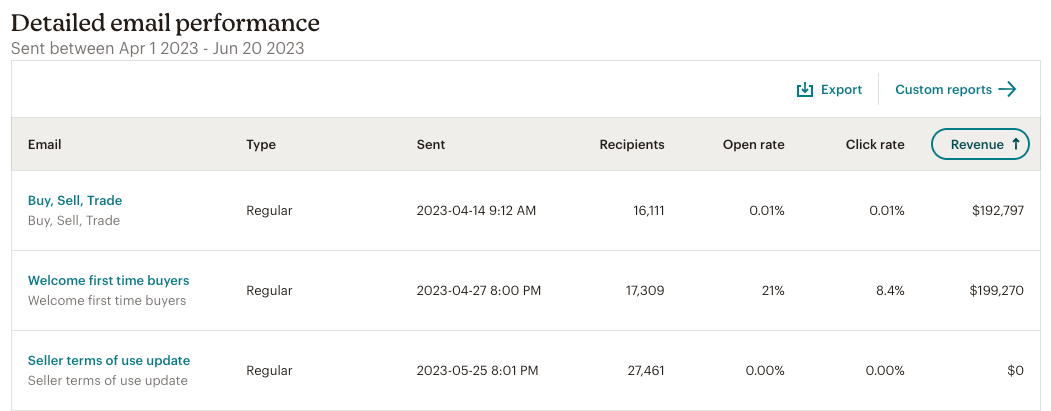
Points To Remember:
- Choose the right email marketing platform: It is important to remember that not all email analytics tools have the same degree of functionality.
Litmus’ email analytics, for example, has certain limitations. It can’t track subscribers who have disabled images on their email. For subscribers who use web-based email clients, Litmus can’t track when a particular recipient has stopped viewing an email.
- Track the right metrics: Advanced analytics gives users highly granular data. But you may not need to track everything.
So, choose the right KPIs to track. In email marketing, these would include open rate, list growth rate, bounce rate, click through rate, conversion rate, and the number of unsubscribes.
- Optimize your campaigns: Use the data to monitor and optimize your campaigns. The right email marketing platform can provide you with qualified, error-free campaign management services.
The Future Of Email Marketing With AI
According to Statista, by 2025, email will see a whopping 4.6 billion users across the globe.
In the past, we have seen the incredible stability of email amidst the rise and fall of many next-gen technologies. Notwithstanding the overarching dominance of so-called ‘email killers’, email has continued to thrive. And this trend is not going to shift anytime soon.
“Email isn’t going anywhere. It’s going to continue being a primary broadcast channel for owned content. If anything, I could see it being even more important with the fall of social channels like Twitter,” says Karen Hopper, senior director, performance marketing, Bully Pulpit Interactive.
Now, with the integration of AI into email, the digital marketing mix will continue to be defined by this one channel. According to Selzy, 50.7% of users prefer AI to non-AI approaches in marketing via email.
As we have been seeing in this post, AI-based email marketing is multidimensional, attending to the different aspects of marketing, from personalization and segmentation to deliverability and reporting. AI tools will only get stronger, and more mature with time.
Since email marketing is not likely to disappear from the scene, it remains to be seen how future AI integrations will transform the use of email in marketing, especially in relation to personalization, and user engagement. Here’s how Hillel Berg, email marketing expert, and founder of Hillel Berg Email Marketing, sees it:
“As AI technology advances, such personalization will likely become even more sophisticated, potentially diminishing its initial impact. Consequently, brands will need to explore novel ways to stand out in crowded inboxes if ultra-personalization becomes the standard.”
Wrapping Up!
Email marketing with AI is a revolutionary approach to connecting with and engaging customers. As AI continues to evolve, email marketing will grow in lockstep with it.
If you think we’ve missed anything related to the use of AI in email marketing, let us know in the comments below.


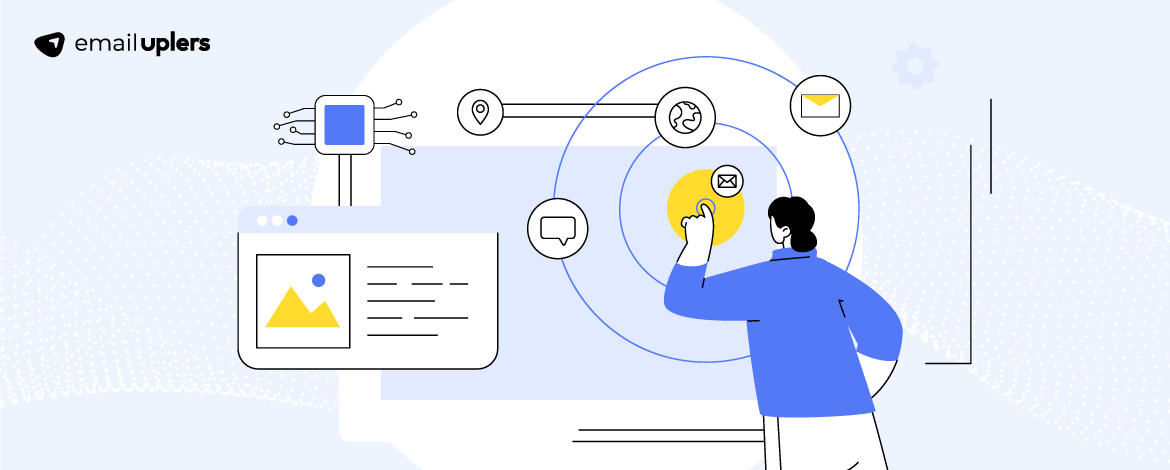




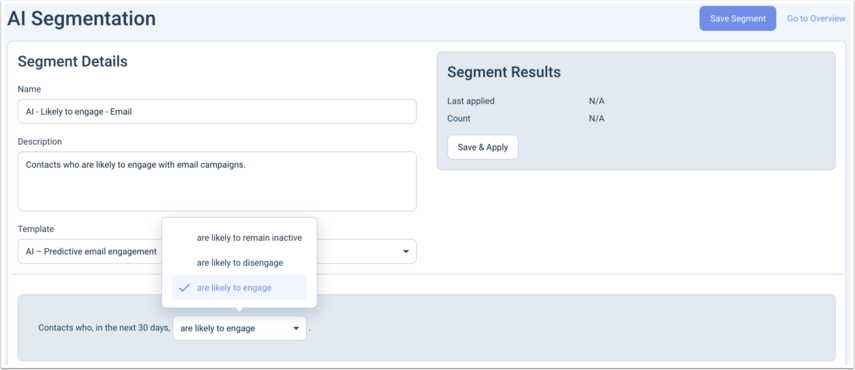
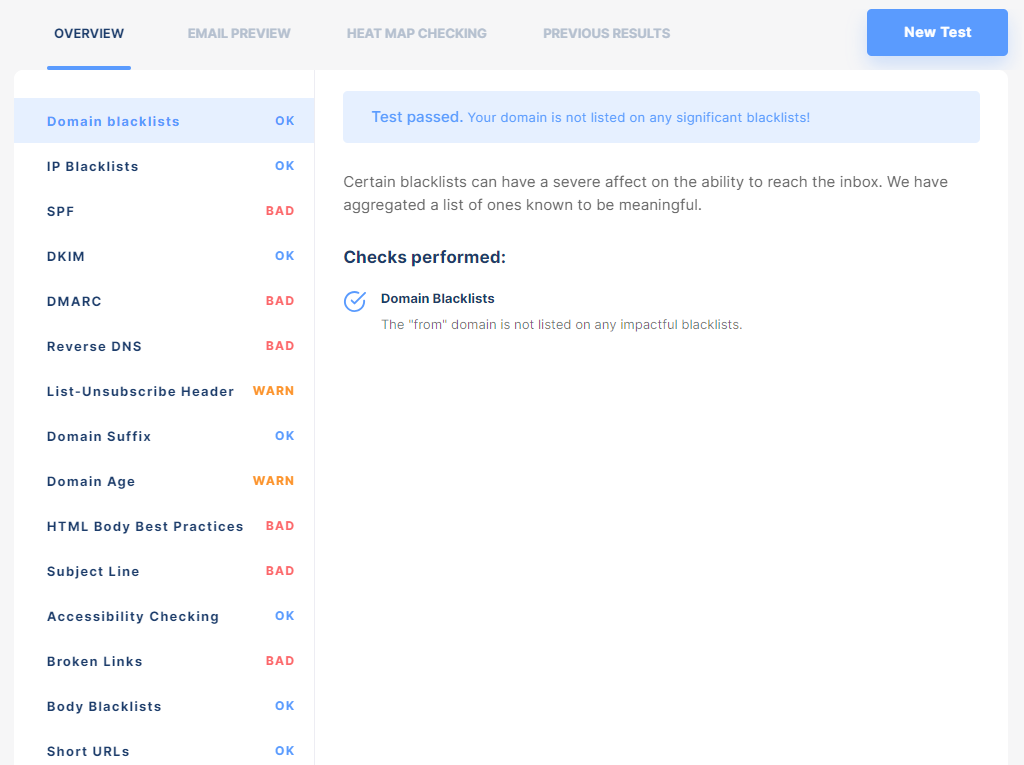
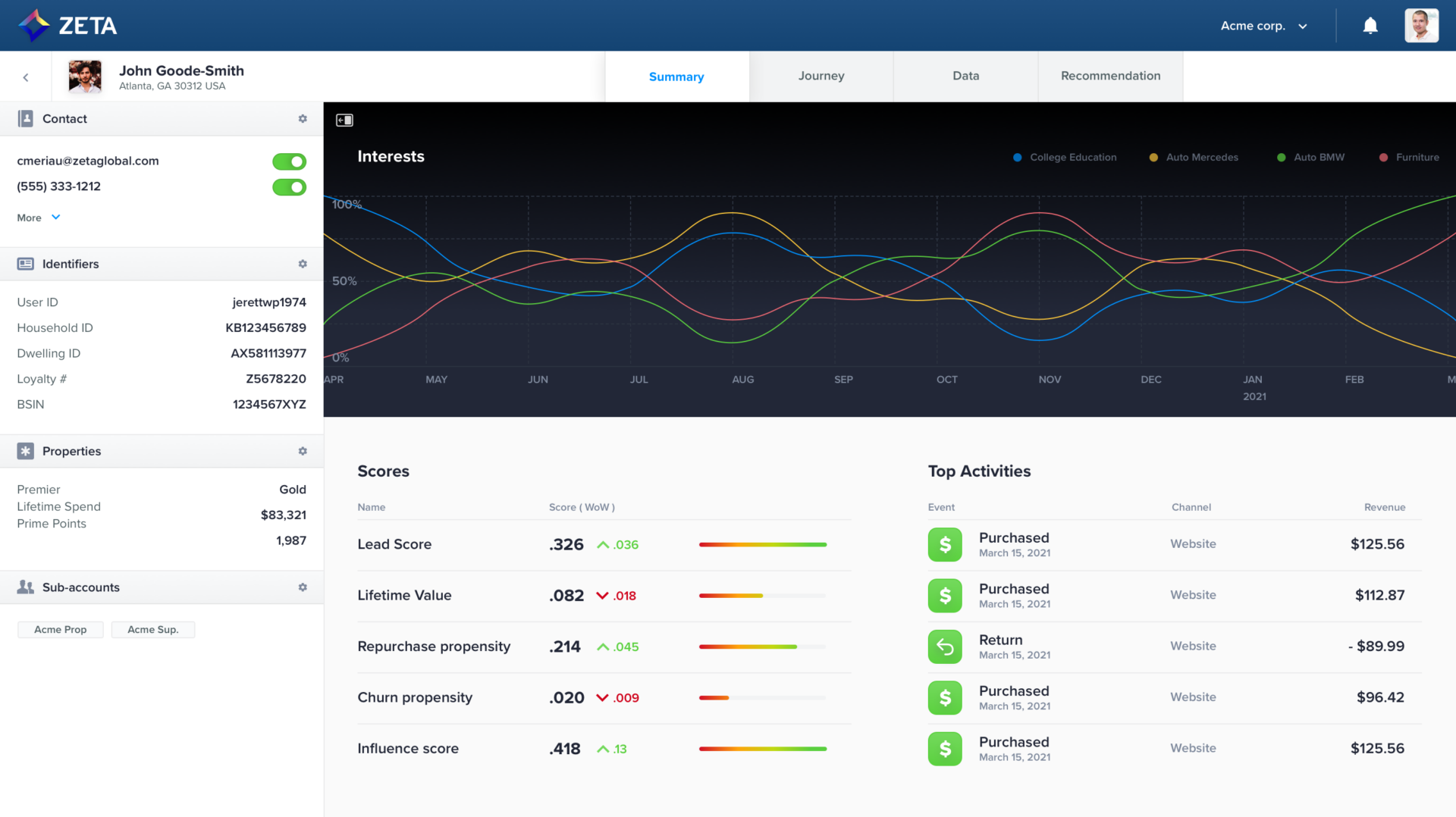

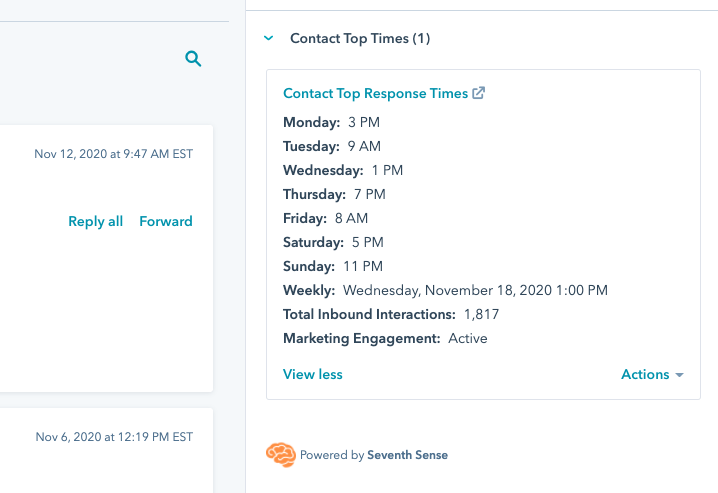
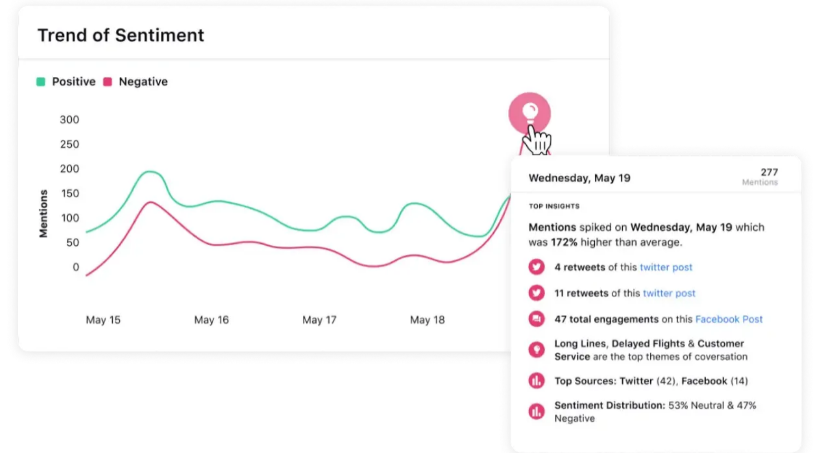

Susmit Panda
Latest posts by Susmit Panda (see all)
Generative AI & Email Marketing ~ Unveiling A Powerful Combination of Better Returns
It Takes Two: 5 Ways How GA4 Integration With Marketing Cloud Can Jack Up Your Conversions